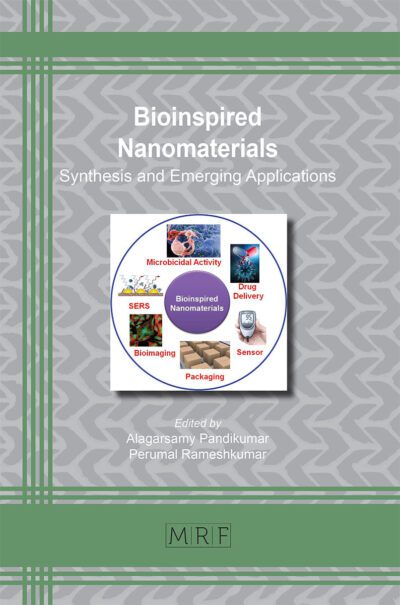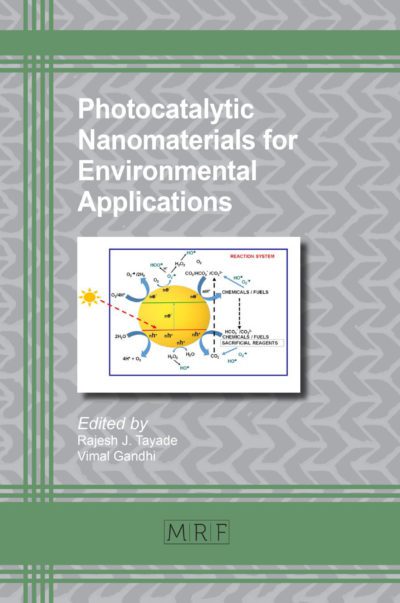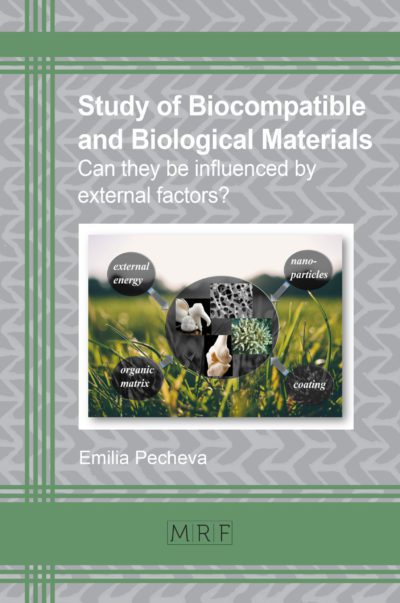Synthesis and characterization of various surfactants for stabilized CuO powder
Alina MATEI, Vasilica ŢUCUREANU, Marian POPESCU, Cosmin ROMANIŢAN, Bogdan BIŢĂ, Ileana CERNICA
download PDFAbstract: In the present work, CuO nanoparticles were successfully prepared by the coprecipitation method using copper acetate (Cu(CH3COO)2) as a basic precursor, sodium hydroxide (NaOH) as a precipitator material, sodium dodecyl sulfate (SDS) and cetyltrimethylammonium bromide (CTAB) as anionic and cationic surfactants, respectively. The synthesized powders samples were characterized by Fourier transform infrared spectrometry (FT-IR), field emission scanning electron microscopy (FESEM) and X-ray diffraction (XRD). The investigation showed that the added types of surfactants have effects on the decrease of the crystallite size, on the CuO particles morphology, shape and uniform distribution as it is noticed in the XRD and SEM characterizations. Additionally, the FTIR spectra for all the powders samples showed the same Cu-O stretching vibration mode which indicates the presence of a crystalline CuO monoclinic structure. The obtained results create premises for further advanced the applications of CuO powders in various domains.
Keywords
Copper oxide, Nanoparticles, Surfactants, Chemical method
Published online 11/5/2018, 9 pages
Copyright © 2018 by the author(s)
Published under license by Materials Research Forum LLC., Millersville PA, USA
Citation: Alina MATEI, Vasilica ŢUCUREANU, Marian POPESCU, Cosmin ROMANIŢAN, Bogdan BIŢĂ, Ileana CERNICA, ‘Synthesis and characterization of various surfactants for stabilized CuO powder’, Materials Research Proceedings, Vol. 8, pp 52-60, 2018
DOI: https://dx.doi.org/10.21741/9781945291999-6
The article was published as article 6 of the book Powder Metallurgy and Advanced Materials
![]() Content from this work may be used under the terms of the Creative Commons Attribution 3.0 licence. Any further distribution of this work must maintain attribution to the author(s) and the title of the work, journal citation and DOI.
Content from this work may be used under the terms of the Creative Commons Attribution 3.0 licence. Any further distribution of this work must maintain attribution to the author(s) and the title of the work, journal citation and DOI.
References
[1] R. R. Sandupatla, P. Veerasomaiah, Synthesis, characterization and photoluminescence study of CuO nanoparticles using aqueous solution method, Int. J Nanomater. Biostruct. 6 (2016) 30–33.
[2] A. El-Trass, H. ElShamy, I. El-Mehasseb et al., CuO nanoparticles : synthesis, characterization, optical properties and interaction with amino acids, Appl. Surf. Sci. 258 (2012) 2997–3001. https://doi.org/10.1016/j.apsusc.2011.11.025
[3] E. Darezereshki, F. Bakhtiari, Synthesis and characterization of tenorite (CuO) nanoparticles from smelting furnace dust (SFD), J Min. Metall. Sect. B-Metall. 49 (2013) 21–26. https://doi.org/10.2298/JMMB120411033D
[4] A. Rahnama, M. Gharagozlou, Preparation and properties of semiconductor CuO nanoparticles via a simple precipitation method at different reaction temperatures, Opt. Quant. Electron. 44 (2012) 313–322. https://doi.org/10.1007/s11082-011-9540-1
[5] S.J. Davarpanah, R. Karimian, V. Goodarzi et al., Synthesis of Copper (II) Oxide (CuO) nanoparticles and its application as gas sensor, J Appl. Biotechnol. Rep. 2 (2015) 329–332.
[6] M.E. Grigore, E.R. Biscu, A.M. Holban, et al., Methods of synthesis, properties and biomedical applications of CuO nanoparticles, Pharmaceuticals 9 (2016) 1–14. https://doi.org/10.3390/ph9040075
[7] J. Singh, G. Kaur, M. Rawat, A brief review on synthesis and characterization of copper oxide nanoparticles and its applications, J Bioelectron. Nanotechnol. 1 (2016) 1–9.
[8] A. Matei, V. Tucureanu, L. Dumitrescu, Aspects regarding synthesis and applications of ZnO. Bull Transilv Univ Brasov, Ser.I: Eng. Sci. 7 (2014) 45-52.
[9] T. Iqbal, A. Hassan, S. Ghazal, Synthesis of iron oxide, cobalt oxide and silver nanoparticles by different techniques: a review, Int. J Sci. Eng. Res. 7 (2016) 1178–1221.
[10] K. Phiwdang, S. Suphankij, W. Mekprasart, Synthesis of CuO nanoparticles by precipitation method using different precursors, Energy Procedia. 34 (2013) 740–745. https://doi.org/10.1016/j.egypro.2013.06.808
[11] M.F. Romadhan, N.E. Suyatma, F.M. Taqi, Synthesis of ZnO nanoparticles by precipitation method with their antibacterial effect, Indones. J Chem. 16 (2016) 117–123. https://doi.org/10.22146/ijc.21153
[12] D. Raoufi, Synthesis and microstructural properties of ZnO nanoparticles prepared by precipitation method, Renew. Energy. 50 (2014) 932–937. https://doi.org/10.1016/j.renene.2012.08.076
[13] M.C. Mascolo, Y. Pei, T.A. Ring, Nanoparticles in a large pH window with different bases, Materials 6 (2013) 5549–5567. https://doi.org/10.3390/ma6125549
[14] H. Siddiqui, M.S. Qureshi, F.Z. Haque, Optik surfactant assisted wet chemical synthesis of copper oxide (CuO) nanostructures and their spectroscopic analysis, Optik 127 (2016) 2740–2747. https://doi.org/10.1016/j.ijleo.2015.11.220
[15] A.K. Arora, Synthesis of nanosized CuO particles: a simple and effective method, Int. J Chem. Sci. 11 (2013) 1270–1276.
[16] T.H. Tran, V.T. Nguyen, Copper oxide nanomaterials prepared by solution methods, some properties, and potential applications:a brief review, Int. Sch. Res. Notices 2014 (2014) 1-14. https://doi.org/10.1155/2014/856592
[17] R. Eview, Methods of preparation of nanoparticles- a review, Int. J Adv. Eng. Techol. 7 (2015) 1806–1811.
[18] P. Derakhshi, R. Lotfi, Synthesis and surfactant effect on structural analysis of nickel doped cobalt ferrite nanoparticles by c-precipitation method, J Appl. Chem. Res. 6 (2012) 60–65.
[19] S.K. Mehta, S. Kumar, S. Chaudhary et al., Evolution of ZnS nanoparticles via facile CTAB aqueous micellar solution route: a study on controlling parameters, Nanoscale Res. Lett. 4 (2009) 17–28. https://doi.org/10.1007/s11671-008-9196-3
[20] L.P. Singh, S.K. Bhattacharyya, G. Mishra, S. Ahalawat, Functional role of cationic surfactant to control the nano size of silica powder, Appl. Nanosci. 1 (2011) 117–122. https://doi.org/10.1007/s13204-011-0016-1
[21] M. Manisha, P. Muthuprasanna, Surya prabha K et al., Basics and potential applications of surfactants – a review, Int. J Pharm. Tech. Res. 1 (2009) 1354–1365.
[22] R. Azarmi, A. Ashjaran, Type and application of some common surfactants, J Chem. Pharmacal. Res. 7 (2015) 632-640.
[23] M. Saterlie, H. Sahin, B. Kavlicoglu et al., Particle size effects in the thermal conductivity enhancement of copper-based nanofluids, Nanoscale Res. Lett. 6 (2011) 1–7. https://doi.org/10.1186/1556-276X-6-217
[24] A. Ananth, S. Dharaneedharan, M.S. Heo et al., Copper oxide nanomaterials: synthesis, characterization and structure-specific antibacterial performance, Chem. Eng. J. 262 (2015) 179-188. https://doi.org/10.1016/j.cej.2014.09.083
[25] X. Wang, J. Yang, L. Shi et al., Surfactant-free synthesis of CuO with controllable morphologies and enhanced photocatalytic property, Nanoscale Res. Lett. 11 (2016) 125. https://doi.org/10.1016/j.cej.2014.09.083
[26] L.S. Cavalcante, J.C. Sczancoski, M.S. Li et al., Aspects method: growth process and photoluminescence properties, Colloids Surf A: Physicochem Eng. Asp. 396 (2012) 346–351. https://doi.org/10.1016/j.colsurfa.2011.12.021
[27] B. Shaabani, E. Alizadeh-Gheshlaghi, E. Azizian-Kalandaragh et al., Preparation of CuO nanopowders and their catalytic activity in photodegradation of Rhodamine-B, Adv. Powder Technol. 25 (2014) 1043–1052. https://doi.org/10.1016/j.apt.2014.02.005














